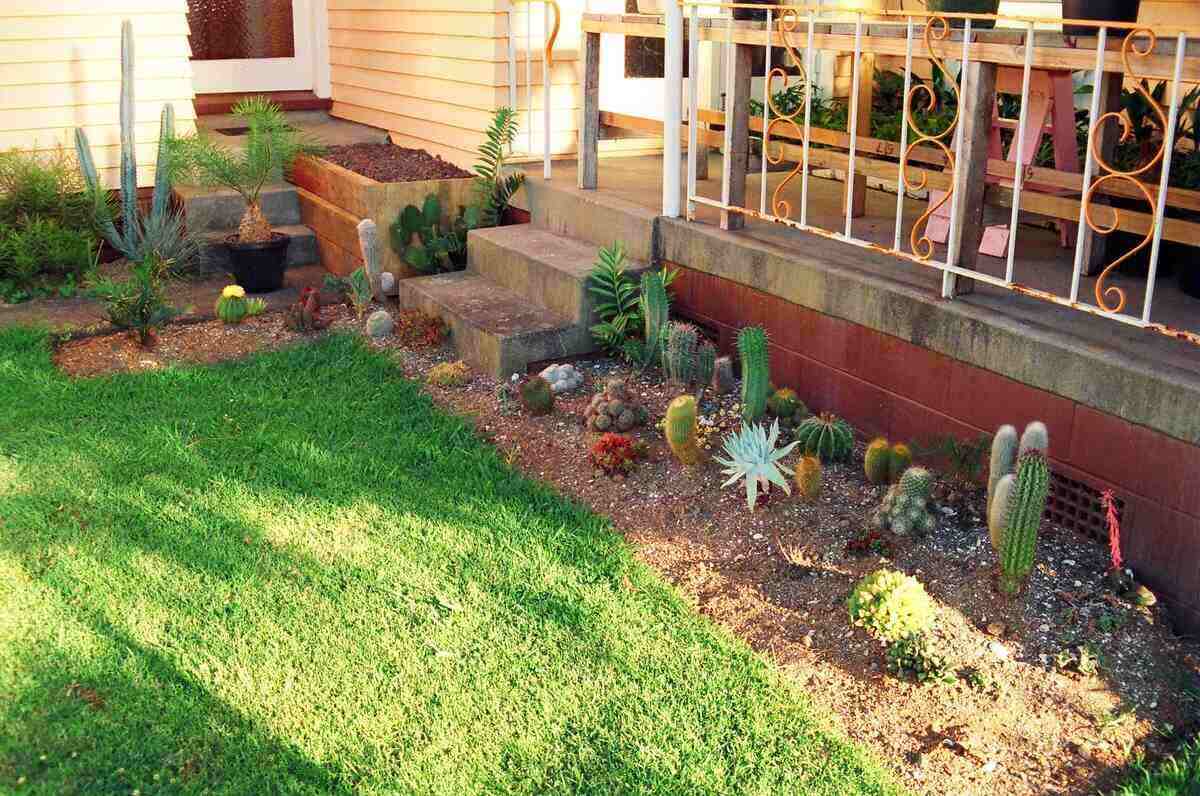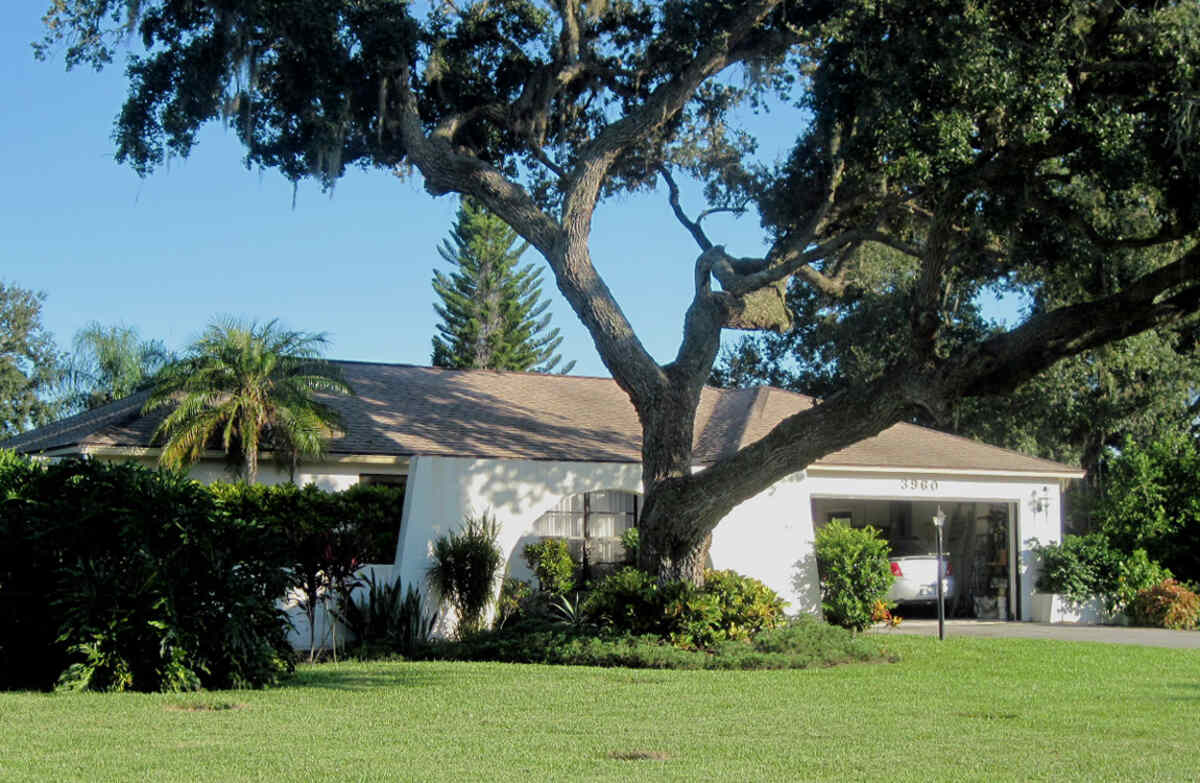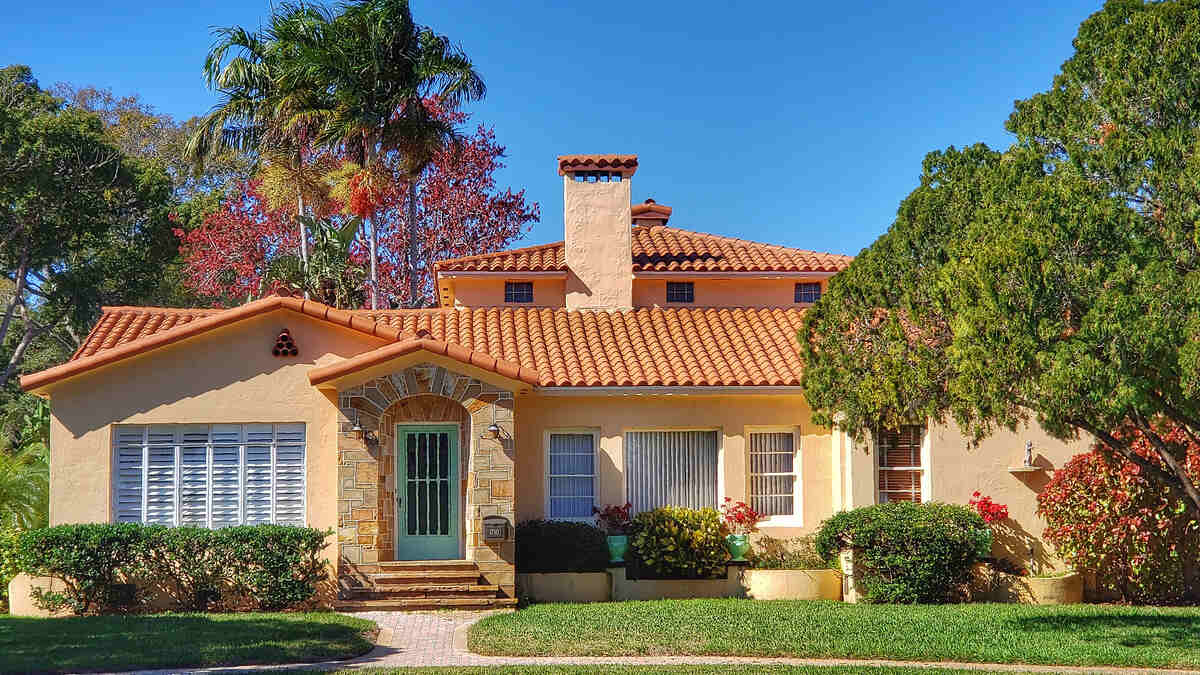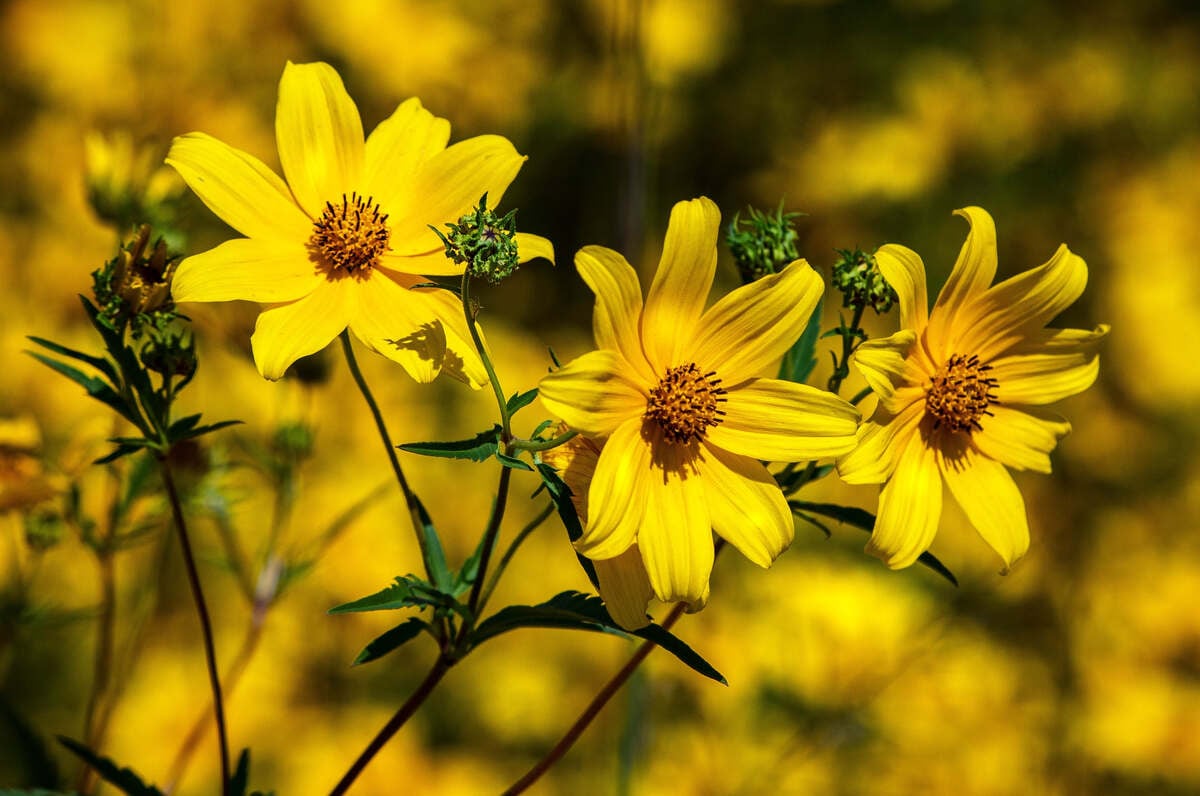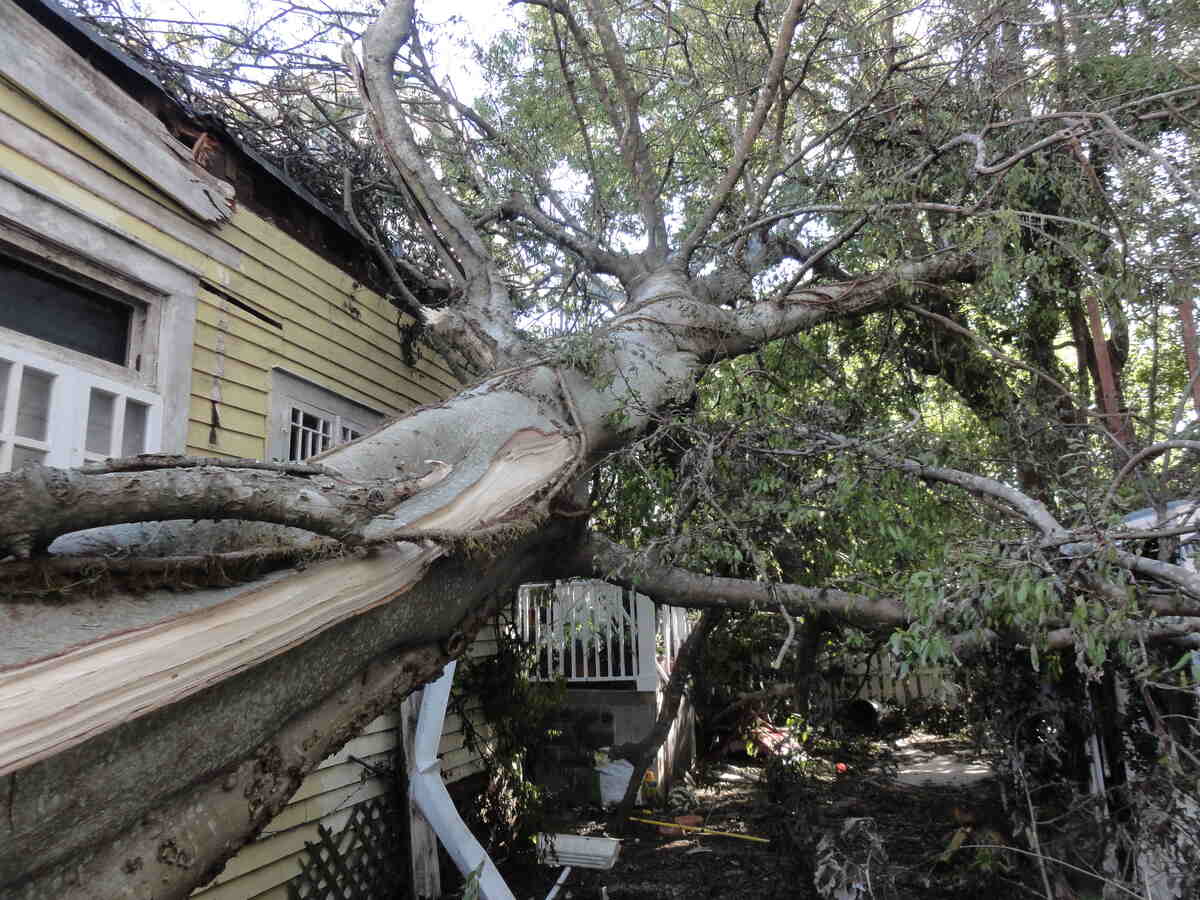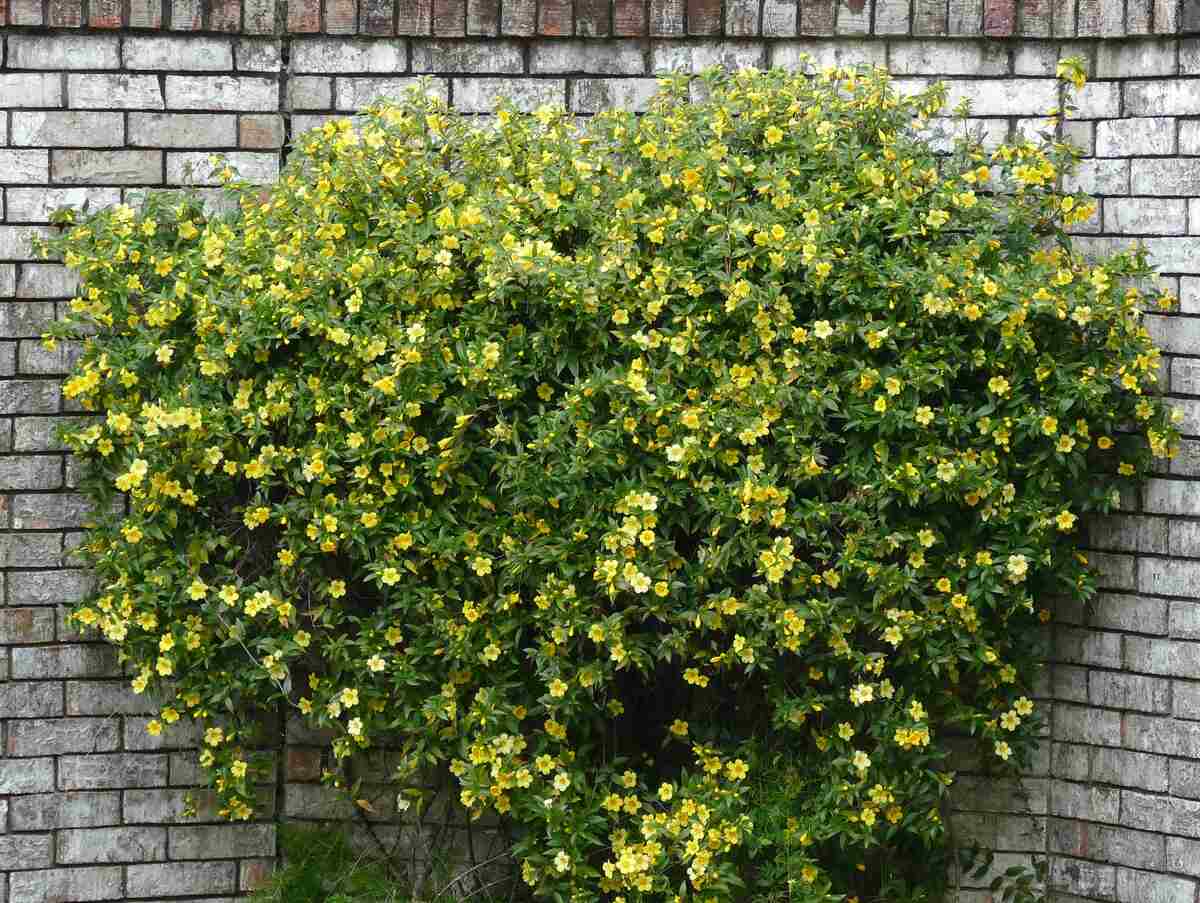
Sarasota has a subtropical climate with mild winters and hot, humid summers with frequent but short-lived thunderstorms in the early afternoon. Plants here need to be tolerant of drought and hurricanes with their storm surges and high winds. That’s why homeowners need to be aware of the 11 best native plants for Sarasota.
Florida native plants can not only survive these weather conditions but also thrive in them. After all, they are the plants that were already here when Europeans arrived. By planting them, you can save water, time, and money.
We’ve listed 11 native plants that will thrive in your Sarasota garden. Let’s investigate:
What are Native Plants?
According to the National Wildlife Federation, “A plant is considered native if it has occurred naturally in a particular region, ecosystem, or habitat without human introduction.” Native plants thrive in their particular region and are a low-maintenance landscaping idea for Sarasota.
Some of the advantages of native landscapes include the following:
- They are adapted to local climate and soil conditions and are more resistant to damage from that area’s conditions (e.g., drought, diseases).
- They provide food sources (e.g., nectar, pollen, seeds, leaves, stems) for native butterflies, insects, birds, and other animals.
- They reduce energy consumption and pollution (e.g., limited need for mowing).
- They reduce the need for pesticides.
- They enhance aesthetics and visual quality.
Native Shrubs
Southern Wax Myrtle or Bayberry (Morella cerifera)
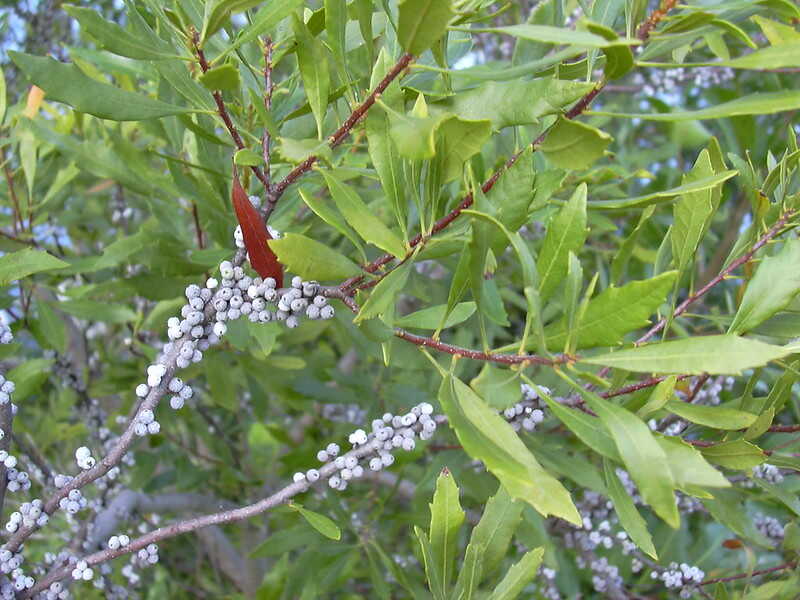
Also known as Myrica cerifera, Southern wax myrtle may be placed in many types of gardens, including sensory gardens, and used as a barrier shrub, hedge, or tree. This rapid grower attracts butterflies, bees, and songbirds.
The Southern wax myrtle has no serious insect or disease problems. If you’re crafty, you can make bayberry-scented candles, soaps, and sealing wax with the berries. However, because of the fruits’ small size, you’ll need 5,000 or more to make a 2-ounce candle.
- Plant type: Shrub (or small tree)
- USDA Hardiness Zone: 7-11
- Sun: Full sun, part shade
- Soil: Not particular but prefers well-drained deep sands, loams, and clays; pH <6
- Duration: Long-lived perennial
- Fragrance: Bayberry scent when leaves are crushed. Fragrant flowers.
- Bloom time: White and green inconspicuous blooms in spring. Blue fruits ripen in late summer to early fall.
- Water needs: Water well until established and then provide little additional care.
- Mature height: 10-15 feet tall (can reach 20 feet or more) by 8 feet wide
- Potential hazards: Southern wax myrtles are considered potential fire hazards, so don’t plant them close to your home.
- Maintenance: Low. Prune annually to maintain a tree shape.
Saw Palmetto (Serenoa repens)
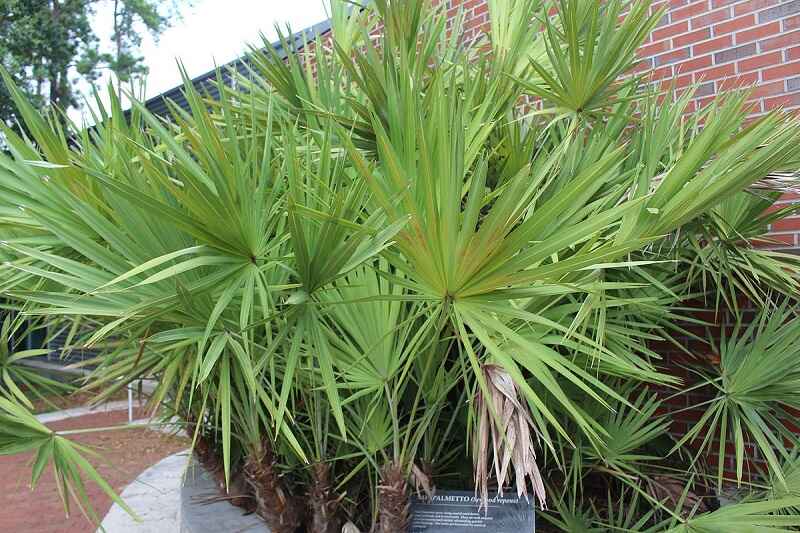
Good in a drought-tolerant or even a winter garden, you can use saw palmetto as a specimen plant. With its creeping growth pattern, it can have multiple trunks and grow up to 10 feet wide, according to the University of Florida. It attracts butterflies, birds, and bees, who make high-grade honey from what they collect from the plant.
Some people believe an extract of the berries lowers levels of prostate-specific antigen (PSA) in prostate cancer, although the American Cancer Society says no evidence exists for this.
Saw palmetto is used as a supplement, but don’t think you’re going to make a mint off your plant. Anyone who harvests and sells saw palmetto berries in Florida must acquire a permit.
- Plant type: Shrub
- USDA Hardiness Zone: 8a-11
- Sun: Full sun, part shade
- Soil: Dry loam and sand; pH <6-8
- Duration: Long-lived perennial
- Fragrance: Sweet
- Bloom time: Small yellow-white flowers that bloom in spring and summer. Small yellow berries that turn dark blue and mature in early fall and persist into the winter.
- Water needs: Water regularly when first planted but very drought tolerant once established.
- Mature height: Typically 3-8 feet tall by 4-6 feet wide
- Potential hazards: Fine, sharp, saw-like teeth or spines along the stems can scratch. Don’t choose saw palmetto if you practice firewise landscaping.
- Maintenance: Low. Remove dead fronds and fruit stems.
Florida Privet or Florida Swamp Privet (Forestiera segregata)
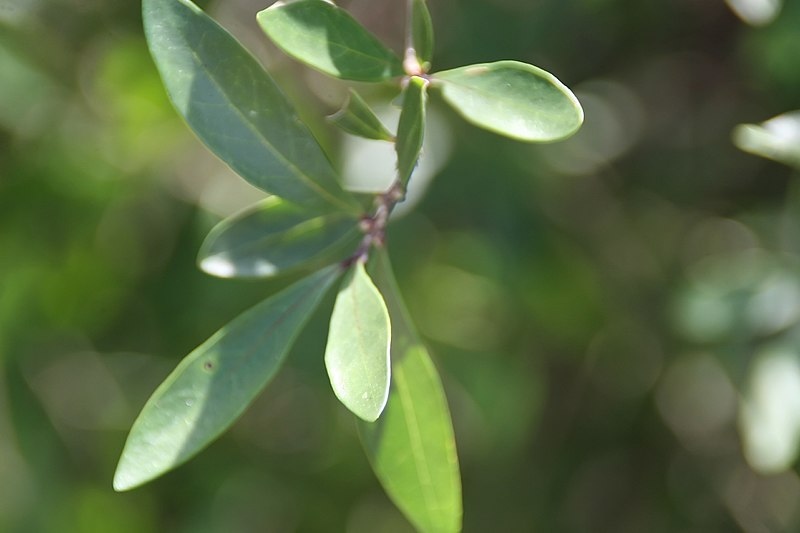
Birds eat the Florida privet’s fruit because the fruit ripens early, before most others. You can plant this shrub as a specimen plant or a hedge. It can be used along foundations if you regularly prune it.
Arranged in clusters, the flowers look like a single bloom; they attract bees and butterflies. This shrub has no serious disease or insect issues.
- Plant type: Shrub
- USDA Hardiness Zone: 8a-11
- Sun: Full sun, partial shade
- Soil: Well-drained sandy, loamy, or calcareous soils; pH 5.1-8.5.
- Duration: Long-lived perennial
- Fragrance: Intensely sweet
- Bloom time: Showy yellowish-green blooms in early spring. Purplish or dark blue fruit ripens in late spring.
- Water needs: Does not require supplemental water once established.
- Mature height: 5-15 feet tall by 5-10 feet wide
- Potential hazards: Foul-tasting berries stain clothing and skin, but more important, they are toxic to humans and dogs.
- Maintenance: Low. Remains virtually maintenance-free once established.
Buttonsage (Lantana involucrata)
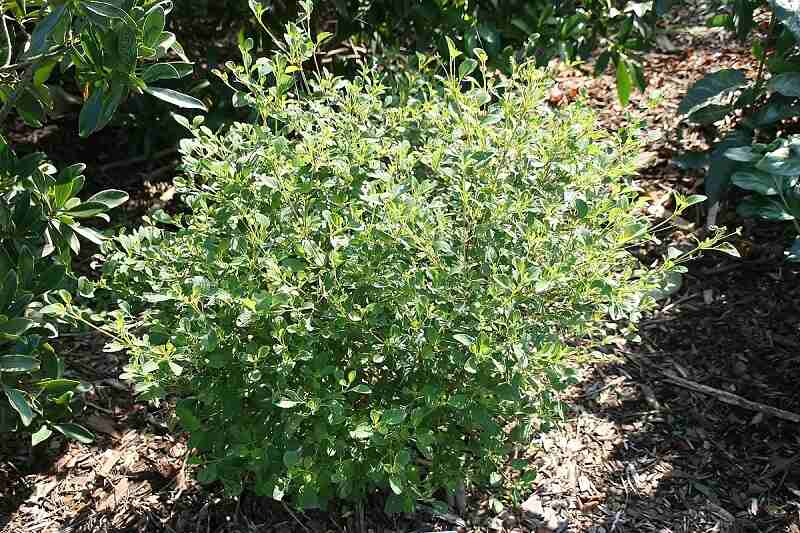
Butterflies adore the flowers of the buttonsage, or wild sage, shrub. The birds and the bees like it, too. It is a good choice for a low hedge, foundation planting, or ground cover. Ensure that you don’t confuse Lantana involucrata with Lantana camara, which is widely sold commercially but is nonnative and considered invasive in Florida.
- Plant type: Shrub
- USDA Hardiness Zone: 8b-11
- Sun: Full sun, part shade
- Soil: Well-drained limestone or sandy soils; pH 6.5-7.5
- Duration: Long-lived perennial
- Fragrance: Very fragrant. Crushed leaves smell like sage.
- Bloom time: Year-round blooming of white to lavender showy flowers in clusters. Year-round purple showy fruit.
- Water needs: Low. Does not require supplemental water once established but will blossom more if watered.
- Mature height: Up to 5 feet high by 1-5 feet wide
- Potential hazards: The sap can irritate the skin, so wear gloves and eye protection while working with the buttonsage. All parts of the plant can be very toxic to pets and people if ingested.
- Maintenance: Low. Can be pruned without fear, even (almost) to the ground. Benefits from light fertilization.
Native Flowers
Wand or Slender Goldenrod (Solidago stricta)
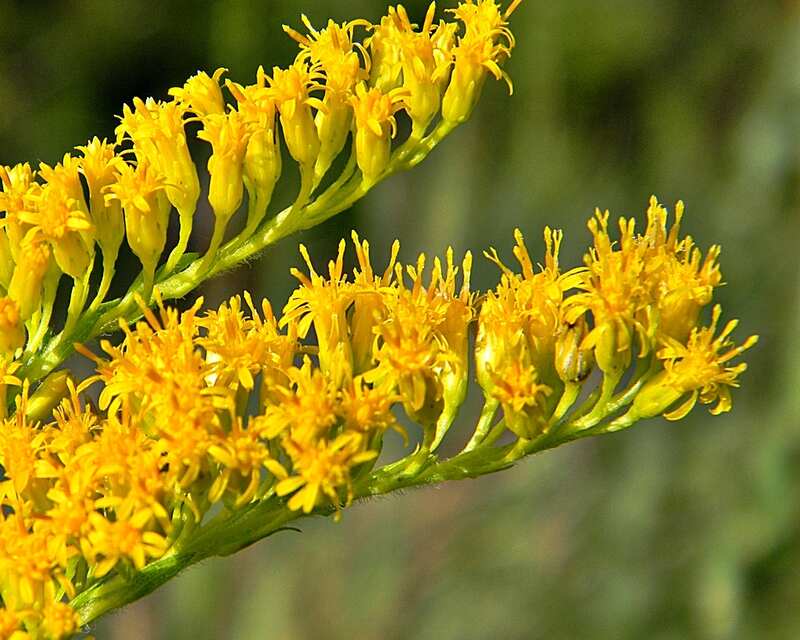
Once thought to cause hay fever (ragweed is the true villain here), goldenrod attracts many native bees, birds, and Monarch and other butterflies. Therefore, it makes a good addition to wildflower gardens but can be planted anywhere in your South Florida landscape, especially in xeriscape gardens.
- Plant type: Flower
- USDA Hardiness Zone: 5-9
- Sun: Full sun, part shade
- Soil: Sand but tolerates clay; pH 6-8
- Duration: Perennial
- Fragrance: Rich anise scent
- Bloom time: Yellow clusters of flowers blooming in late summer and early fall
- Water needs: No watering needed unless drought conditions exist
- Mature height: 3-6 feet tall by 2-4 feet wide
- Potential hazards: None
- Maintenance: Low. Cut back annually because it spreads. Don’t fertilize, which makes the stems droopy.
Black-Eyed Susan (Rudbeckia hirta)
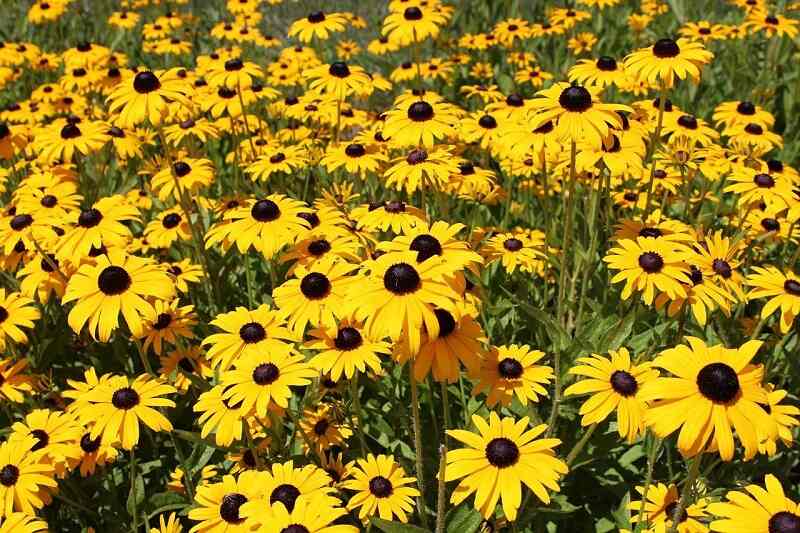
The black-eyed Susan is a cheerful-looking flower that looks good in bud vases or flower arrangements. It can be a colorful addition to wildflower, prairie, and meadow gardens. It also grows well in containers. Black-eyed Susan attracts bumble bees, butterflies, and birds. Birds like the seeds within the “black eye” of this flower from the aster family.
- Plant type: Flower
- USDA Hardiness Zone: 3-10
- Sun: Part sun
- Soil: Well-drained sandy soil; pH <6.8
- Duration: Short-lived perennial
- Fragrance: None
- Bloom time: Yellow flowers bloom from spring to fall.
- Water needs: Drought tolerant but likes occasional watering at soil level; watering from above may cause powdery mildew.
- Mature height: 2-3 feet tall by 1-2 feet wide
- Potential hazards: None
- Maintenance: Fertilize in early spring and early fall. Remove dead foliage and stems in the fall, winter, or early spring. Deadheading encourages reblooming.
Swamp Mallow or Rose Mallow (Hibiscus moscheutos)
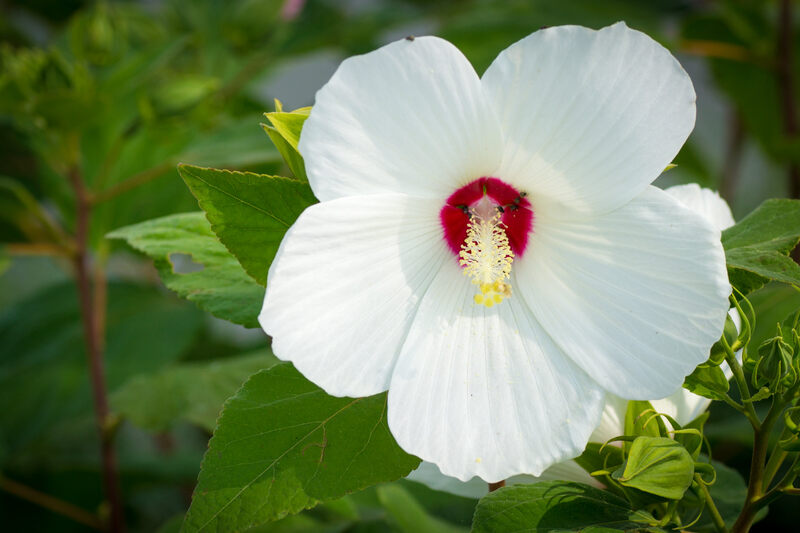
Swamp mallow attracts bees (especially bumblebees), caterpillars and butterflies, and hummingbirds. It can be used in native, pollinator, butterfly, and rain gardens. This flower works best as a border plant, in low spots or wet areas, and as a screen or hedge but can also grow in large containers.
The genus name is Greek for “mallow” and the species name is Latin for “musk-scented.” You can eat the leaf buds, young leaves, and flowers of swamp mallow, especially in salads. The seeds can be roasted and eaten.
- Plant type: Flower
- USDA Hardiness Zone: 4-9
- Sun: Full sun, part shade
- Soil: Wet to moist loam, silt, or sand; pH <6.8
- Duration: Perennial
- Fragrance: Musky
- Bloom time: Dinner-plate-sized, white or pink flowers bloom in summer and early fall.
- Water needs: High. Water deeply and regularly.
- Mature height: 2-6 feet tall by 2-4 feet wide
- Potential hazards: None
- Maintenance: Medium. Pinch back growing tips if you want to encourage a bush-like appearance. Deadhead spent flowers. Cut back stems to 3-4 inches in late fall.
Native Vine
Yellow or Carolina Jessamine (Gelsemium sempervirens)
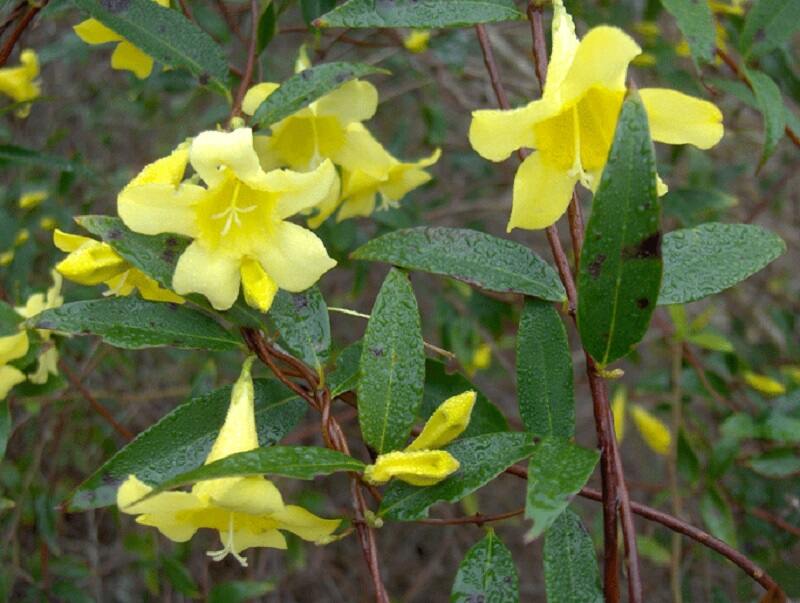
Yellow jessamine can be allowed to climb trees or can be trained on a fence, trellis, or pergola. It can even grow in containers. Its flowers attract bees, hummingbirds, and butterflies, which makes it an excellent choice for a native, pollinator, or butterfly garden. Yellow jessamine can be used as a screen, privacy, or specimen plant.
- Plant type: Flowering vine
- USDA Hardiness Zone: 6-10
- Sun: Full sun, part shade
- Soil: Moist to somewhat dry loam or sand; pH 6-8
- Duration: Long-lived perennial
- Fragrance: Very fragrant yellow flowers
- Bloom time: Showy, trumpet-shaped flowers that bloom in early spring but can appear also as early as December and in early fall. Green to brown fruit displays from September to November.
- Water needs: Medium. Prevent complete soil dryness.
- Mature height: 10-20 feet long
- Potential hazards: The entire plant, as well as honey made from yellow jessamine, may be lethal to humans. Its sap can cause contact dermatitis. In addition, this plant has an extreme flammability rating and should not be planted near your home.
- Maintenance: Medium. Shape and train this vine in early spring. Keep a mulch layer around it. Fertilize 2 or 3 times during the growing season.
Native Fern
Wood or Southern Shield Fern (Thelypteris kunthii)
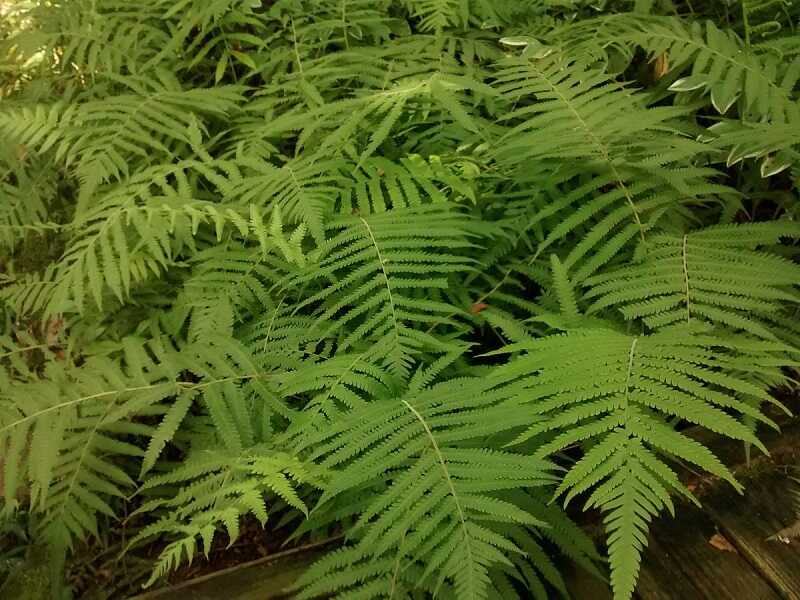
Wood fern can be used in wetland, water, or shade gardens but also in your yard. (It looks particularly good in the shade of oak trees.) Named after Carl Sigismund Kunth, a German botanist who studied American plants, wood fern has fronds that grow in every direction, which only adds to its appeal.
One of the best ferns for home landscape designs in Central Florida, the southern shield fern can be difficult to find commercially, but you may find this pretty specimen at native plant nurseries.
- Plant type: Fern
- USDA Hardiness Zone: 8-11
- Sun: Part shade to shade but can take full sun if watered frequently
- Soil: Moist but well-drained sand, loam, clay, or limestone; pH 6.5-7.5
- Duration: Long-lived perennial
- Fragrance: None
- Bloom time: No blooms, but the best time of interest is summer, when it has green, graceful, arched leaves, and fall, when it turns a pretty bronze
- Water needs: Medium. Water during droughts.
- Mature height: 1-3 feet tall by 8-12 inches wide
- Potential hazards: None
- Maintenance: Low. Cut off dead fronds before spring growth.
Native Trees
Live Oak (Quercus virginiana)
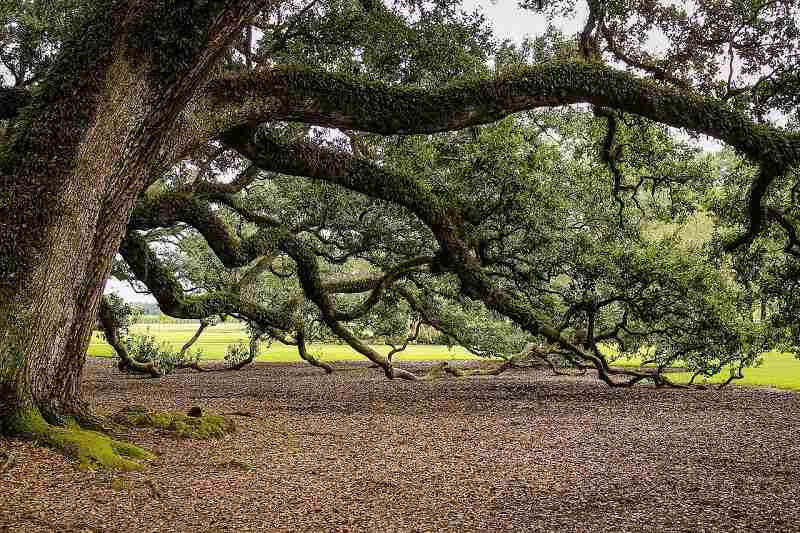
Once a source of wood for ship-building, including the Civil War’s Old Ironsides, the live oak tree supplies food for birds and mammals. Its long, tall branches and oak leaves provide nesting places for birds and squirrels. And hummingbirds eat the pollen.
The live oak’s sweeping limbs “plunge toward the ground before shooting upward,” as put best by the National Wildlife Federation. So be careful where you plant them because, in time, they can lift sidewalks, curbs, and driveways. These beautiful trees are also prone to disease, especially oak wilt disease.
- Plant type: Tree
- USDA Hardiness Zone: 8-11
- Sun: Full sun, partial shade to shade
- Soil: Fertile, well-draining, even salty, soils such as loam, clay, and sand; pH 3.6-7.
- Duration: Long-lived perennial whose life span is 300+ years
- Fragrance: None
- Bloom time: Small, brown, inconspicuous blooms in spring. Acorns ripen and fall in the autumn. Leaves do not change color.
- Water needs: Keep soil moist but well drained
- Mature height: 40-80 feet tall by 40-100 feet wide
- Potential hazards: None
- Maintenance: Water during dry periods. Prune occasionally.
Cabbage Palm (Sabal palmetto)
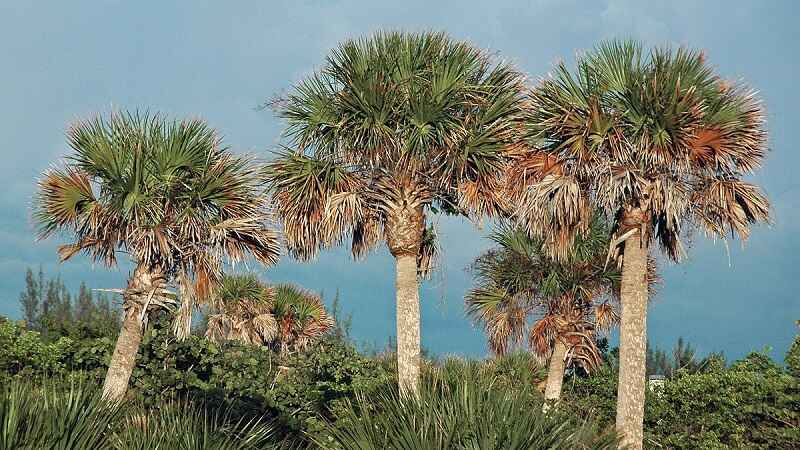
Designated the Florida state tree in 1953, the cabbage palm has an edible heart that tastes like cabbage, thus the plant’s name. Alas, removing the heart kills the tree. Southeastern Native American tribes used this native tree for houses, drying racks for animal skins, arrows, and staffs.
Yellow bats use the palm’s dead fronds for roosting; their fur colors allow them to blend in with the plant. These trees also attract birds, butterflies, and bees.
- Plant type: Palm tree
- USDA Hardiness Zone: 8-11
- Sun: Full sun
- Soil: Well-drained loam and sand; pH 6.6-8.4
- Duration: Long-lived perennial with a life span of 100+ years
- Fragrance: Sweet
- Bloom time: Tiny, creamy-white, fragrant flowers bloom in spring and summer. Black fruits ripen from late summer to fall.
- Water needs: Medium. Water about once a week.
- Mature height: 100 feet tall by 10-20 feet wide
- Potential hazards: None
- Maintenance: Low. Fronds are generally self-maintaining but can be cut if you desire. Fertilize in early spring, late spring or early summer, and late summer. Water every week or two.
How to Choose Native Plants for Your Sarasota Landscape
Sarasota plants should, in general, tolerate brief storm surges and be the following:
- Drought tolerant
- Tolerant of high winds (like these hurricane-resistant trees)
- Salt tolerant (wind and spray)
They also tend to like full sun (6 or more hours/day) to partial shade and sandy or loamy soil. That’s why you should use native species used to Florida’s fierce hurricanes and USDA Hardiness Zone 9b.
Try choosing plants that bloom at various times of the year to provide color year-round. If you prefer to enjoy Florida’s many wonders to managing plants, choose native species or species that typically have low maintenance requirements. And if you prefer environmentally friendly plants, choose drought- and insect-tolerant native species.
FAQ
Plants in Sarasota should survive temperatures as low as 25-30 degrees in USDA Hardiness Zone 9b. Sarasotans can garden much of the year with the area’s average temperature of 73 F and warm breezes from the Gulf of Mexico. By selecting plants suited to this zone, you can improve the chances that your plants will thrive.
Prickly-pear cactus: Prickly-pear cactus (Opuntia species) needs full sun and sandy or loamy soil. This perennial can grow up to 20 feet tall by 3-15 feet wide, depending on the species. Its orange, red, purple, or white flowers bloom in the spring and summer, after which purplish fruit appears.
This fruit and pad of prickly pear cactus can be eaten. The fruit’s taste has been typically compared to watermelon. But beware! Opuntia cacti have thorns, which make weeding and walking near it a challenge. And of course, you must remove the thorns as part of the cooking process. This plant is not a good choice for naked gardeners.
If cacti seem like an intimidating addition to your landscape, check out our article, 11 Ways to Use Cactus in Your Landscaping, for ideas.
Whitehead bogbutton: If you have a bog garden or want an interesting container plant, the whitehead bogbutton (Lachnocaulon anceps) should be on your list. With flower stalks up to 1.25 feet, this perennial has white or light gray flowers that bloom in spring and summer. It needs full sun or part shade. Its soil (loam or sand) must stay wet.
Florida promotes “Florida-Friendly Landscaping,” which seeks to provide a low impact on the environment by:
● Reducing the use of water, fertilizer, and pesticides (this saves you money)
● Properly selecting and maintaining native plants that will thrive
● Providing habitats for birds, butterflies, and other wildlife
● Preventing nutrient pollution from entering Florida’s water
● Designing locally pleasing Florida gardens while protecting the environment (e.g., preventing erosion, recycling yard waste)
It’s impossible to include all of the best native plants for Sarasota in a single article, but here are a few more:
● Shrubs: American beautyberry (Callicarpa americana); Firebush (Hamelia patens); Coralbean (Erythrina herbacea)
● Tree: Buttonwood (Conocarpus erectus)
● Flowers: Florida tickseed (Coreopsis floridana); Blanket-flower (Gaillardia pulchella); Butterflyweed (Asclepias tuberosa); Scarlet sage (Salvia coccinea)
● Grass: Fakahatchee grass (Tripsacum dactyloides)
For additional native planting options, visit the Florida Native Plant Society (FNPS) website.
When to Call The Pros
If you’re having trouble choosing or finding native plants for your yard, let a professional Sarasota landscaper help. They can aid you in planning and carrying out the design of your yard to make it the paradise you imagine it should be, but with the added benefit of you keeping cool in the AC while they perform the labor.
Source
Main Image Credit: Jim Evans / Wikimedia Commons / CC BY-SA 4.0
